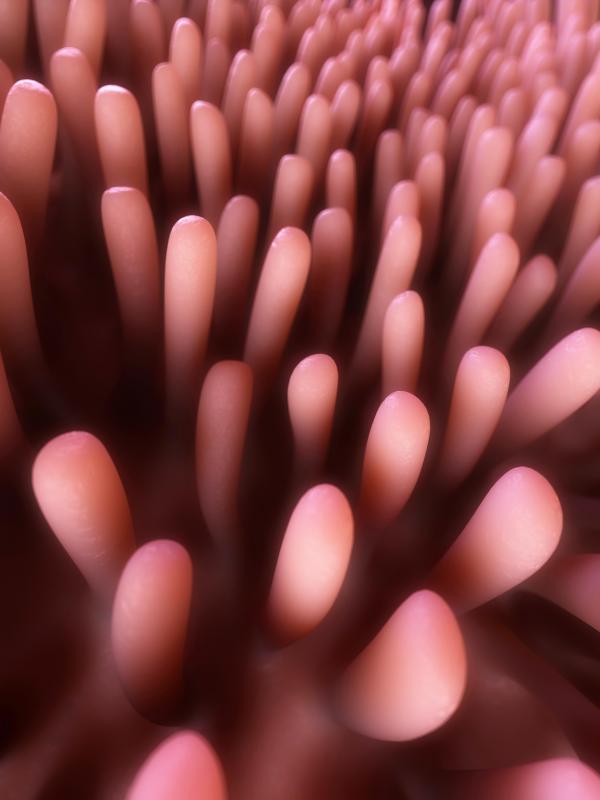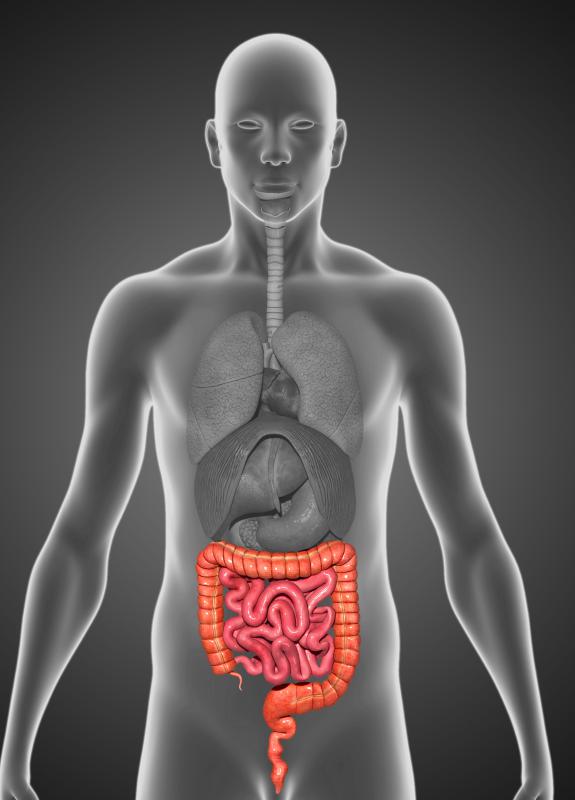At TheHealthBoard, we're committed to delivering accurate, trustworthy information. Our expert-authored content is rigorously fact-checked and sourced from credible authorities. Discover how we uphold the highest standards in providing you with reliable knowledge.
What Is the Small Intestine?
The small intestine is a long, twisted tube that extends from the human stomach to the place where it attaches to the large intestine. It is separated into three distinct parts: the duodenum, the jejunum, and the ileum. The duodenum is the first section and is the place where most digestion occurs. It is also the site where bile and pancreatic juices are secreted into the intestine in order to aid in digestion. The jejunum and ileum are the second and third sections, respectively.
Much of the food a person eats is digested in the small intestine. When food is ingested, it moves down the esophagus and enters the stomach where it is churned and mixes with gastric juices. Food is partially broken down here, and the resulting chyme moves into the intestine. Many of the nutrients are extracted in this part of the intestine and are sent to the liver via the blood for processing. Fat soluble substances, such as pesticide and fertilizer residue, circulate the body via lymphatic fluid before going to the liver for processing.

The surface of the intestine is also covered in circular folds, villi, and microvilli. These structures work to increase the surface area of the intestine for the absorption of nutrients. Villi are finger-like projections that work to absorb the nutrients in food, and microvilli are hair-like projections on the villi that work to finish the breaking down of carbohydrates and proteins. Villi and microvilli are more numerous closer to the stomach than they are closer to the large intestine. Circular folds are folds in the wall of the small intestine that cause chyme to spiral and slow down so that nutrients can be absorbed more efficiently.

By many calculations, the small intestine is one of the longest organs in the human body. This part of the intestine is 1-1.6 inches wide (2.5-4 cm) and about 20 ft long (6-7 m). The length of this part of the intestine allows for a large surface area so nutrients can be absorbed. Surface area is also increased by the use of circular folds, villi, and microvilli — as much as 600 times that it would be without them. Some measurements compare the surface area of this part of the intestine to the floor space of an average two story house, about 2,152 square feet (200 square meters).

The small intestine plays a crucial role in the body's digestive process, absorbing nutrients and minerals essential for overall health. While a balanced diet is key to providing these nutrients, not everyone can consistently consume the necessary variety of foods. For those looking to supplement their intake, the best greens supplements offer a convenient alternative, packed with a concentration of vitamins, minerals, and antioxidants. By supporting the small intestine's function with these supplements, individuals can help ensure their body receives the nourishment it needs for optimal health and well-being.
AS FEATURED ON:
AS FEATURED ON:















Discussion Comments
Post your comments